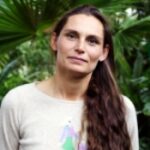Link to Pubmed [PMID] – 28684609
Mol. Biol. Cell 2017 Jul;28(14):1833-1846
Chemical and physical properties of the environment control cell proliferation, differentiation, or apoptosis in the long term. However, to be able to move and migrate through a complex three-dimensional environment, cells must quickly adapt in the short term to the physical properties of their surroundings. Interactions with the extracellular matrix (ECM) occur through focal adhesions or hemidesmosomes via the engagement of integrins with fibrillar ECM proteins. Cells also interact with their neighbors, and this involves various types of intercellular adhesive structures such as tight junctions, cadherin-based adherens junctions, and desmosomes. Mechanobiology studies have shown that cell-ECM and cell-cell adhesions participate in mechanosensing to transduce mechanical cues into biochemical signals and conversely are responsible for the transmission of intracellular forces to the extracellular environment. As they migrate, cells use these adhesive structures to probe their surroundings, adapt their mechanical properties, and exert the appropriate forces required for their movements. The focus of this review is to give an overview of recent developments showing the bidirectional relationship between the physical properties of the environment and the cell mechanical responses during single and collective cell migration.

